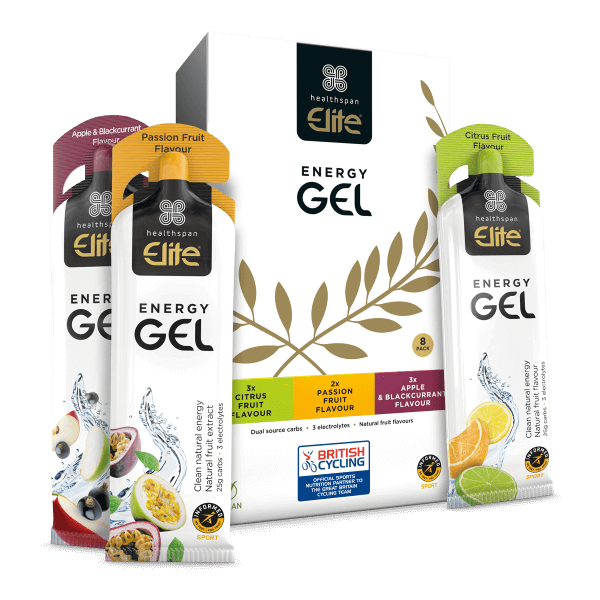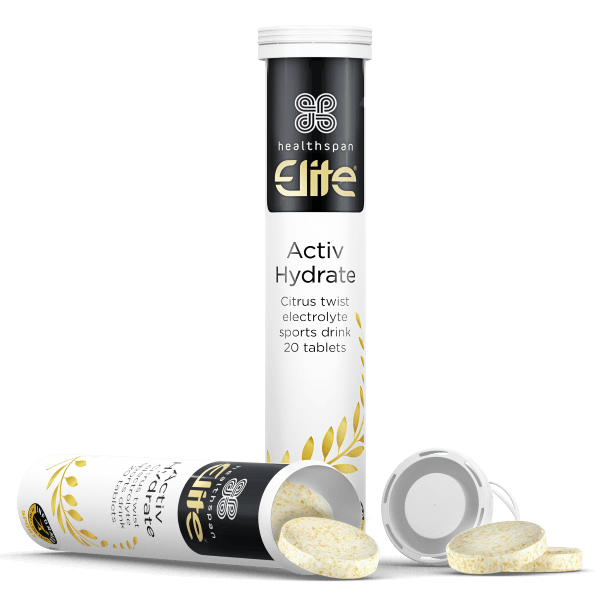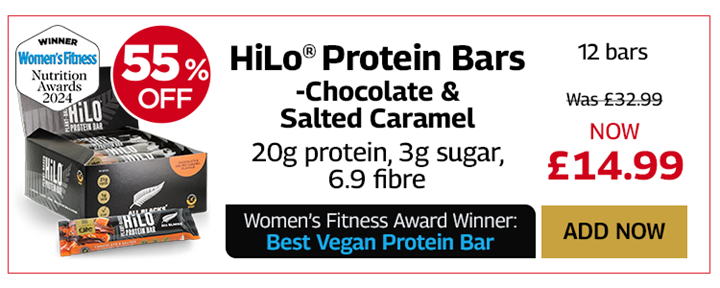Sports nutritionist Nigel Mitchell spent 12 years as Head of Nutrition at British Cycling. Here he outlines how proper nutrition and preparation can help cyclists keep training through the winter months.
🕒 4 min read
As we approach winter, we're faced with cold and wet conditions that can reduce a cyclist's opportunity to participate in their favourite exercise. Fortunately, there are plenty of indoor riding options. This article will cover how proper preparation and nutrition can help riders reduce the risk of injury and over-training in the winter.
"Training indoors poses many of the same challenges as riding outside, but with some minor nuances. Hydration is one of these. Be mindful and think proactively about your training conditions. Often, the room you're training in can feel humid due to less air flow or breeze. This may result in a greater 'heat strain', and cause you to sweat more – so it's essential to stay hydrated. As a rule of thumb, we recommend our Great Britain Cycling Team riders to consume 1 bidon/bottle per hour as a minimum.
"Healthspan Elite gels paired with 1-2 electrolyte tabs help our riders stay energised and hydrated for these indoor sessions. At GBCT, we recommend these products across a variety of training sessions and competitions. Having valuable partners like Healthspan Elite helps our riders to stay fuelled for whatever workout they face."
Callum Edwards, Performance Nutritionist, Great Britain Cycling Team
How training and nutrition interact
Exercising provides a stimulus to the body that results in adaptation – i.e. fitter, faster, stronger.
Nutrition supports and helps the body to maximise that adaptation. If we don't have appropriate nutrition and are training hard, this can lead to a maladaptation, increasing the risk of injury and over-training.
The nutrition support part is simple. For rides lasting longer than 45 minutes, plan to take about 40-60g of carbohydrate every 45 minutes. I find when using an indoor trainer that either an energy gel or a carbohydrate drink works best.
The carbohydrates will help to maintain blood glucose levels, which will help to fuel the brain and the legs. Maintaining these levels also supports the immune system.

Energy Gel – Mixed Pack
Carb and electrolyte boost developed with British Cycling
- Delivers fast-acting energy
- 25g fast-acting carbs and 3 electrolytes
- Apple & Blackcurrant, Citrus Fruit and Passion Fruit flavours
Following the workout, a recovery meal will support recovery and adaptation, and reduce the risk of overtraining. If the session has been hard and longer than 45 minutes, a meal providing about 20-30g of protein and 40-60g of carbohydrate will support the recovery.
This could be a simple meal such as a small tin of mackerel, fresh spinach and a bagel. A plant-based version could swap out the fish for hummus and about 30g of pistachio nuts. Recovery drinks can be a convenient option, with the bonus of knowing exactly how much of each nutrient you're getting.
Setting up the pain cave
In winter, riders are likely to spend a lot of time training indoors, so it's worth spending time getting the setup right.
If you have the luxury of a dedicated bike or trainer, it's worth ensuring the setup is the same as your outdoor bike – in particular, saddle height and pedal setup. Knee and back pain are common complaints from indoor cycling; if the biomechanics are not quite right, the fact that you tend to be more static on the indoor trainer can amplify the risk of injury. I also put my bike and trainer on a yoga mat to protect the carpet from sweat.
Incorporate nutrition into your training plan – this will help you maximise the training. If you're a big sweater, consider using an electrolyte tablet in your water. I recommend getting a nude weight before and after training, and subtract the weight of any fluid or food consumed. This will give you an idea of your sweat loss and ensure you maintain the hydration balance.
Most riders will lose between 1-2l of sweat per hour during indoor riding. Please note that sweat contains salts and this can cause corrosion on your bike, so take some time to keep it clean.

Activ Hydrate
Delicious fruit-flavoured electrolyte drink to replenish minerals lost during exercise
- Replenishes the essential electrolytes sodium, calcium, magnesium and potassium
- Contains 300mg sodium
- Informed Sport-accredited
Work to a plan
To get the most out of your indoor riding, invest a bit of time planning. Schedule the rides and put a structured plan together, designing it so it includes a variety of intensities. It's easy just to do intervals on the trainer, but think about periodising the training – dividing it into phases with specific goals.
Remember that work is work – if you do a 90-minute ride outdoors and average 200 watts, an indoor ride averaging 200 watts will be the same amount of work. One of the advantages of indoor training is that it's highly controllable.
Fasted rides
I'm not a big fan of totally fasted rides, but including a couple of easy ones a week can be part of the plan and can support base training. I find doing these first thing in the morning and taking about 50-100mgs of caffeine beforehand works best.
I would recommend consuming recovery nutrition within 30 minutes of these sessions. For me, this is a bowl of granola with cow’s milk and live yoghurt, while for some a protein carbohydrate recovery drink works well.
High-intensity and power training
One of the advantages of using a smart trainer is that you can perform a functional fitness test at the start of your indoor riding season, and this can be revisited monthly to track changes in condition.
When training indoors, many people will do more power and high-intensity training. This can have great physical benefits and keeps the training interesting. However, it's important to remember that these types of sessions can be very glycolytic – use a lot of carbohydrate – so plan to consume carbohydrate during the session.
If the session is built on specific power blocks, taking an energy gel between blocks can help. High-polyphenol food and supplements such as Performance Cherry (pure sour cherry juice concentrate) can reduce muscle damage and improve recovery.

Performance Cherry
100% pure sour cherry juice concentrate
- Contains approx. 100 whole cherries per sachet
- Naturally high levels of anthocyanins and flavonoids
- Commonly used by professional athletes to aid recovery
With a little forward planning we can use food and nutrition to support and maximise indoor training. Nutritional supplements can be a key part of this plan. Healthspan Elite provides high-quality supplements that are rigorously tested for quality, efficacy and substances banned for competing athletes.
Whatever cycling and winter activities you are doing, please remember to focus on the key points above and remember to have fun!









